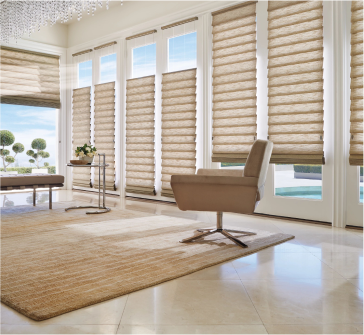Measuring for mini blinds might seem like a straightforward task, but it’s an art that requires precision and attention to detail. Get it right, and you’ll ensure your window blinds fit perfectly within the window frame, enhancing the aesthetics of your space.
While the basics are simple, some nuances can make all the difference. Curious about the common pitfalls and pro tips?
Dive in, and let’s unravel the secrets to achieving that perfect fit.
Understanding the Basics of Mini Blinds
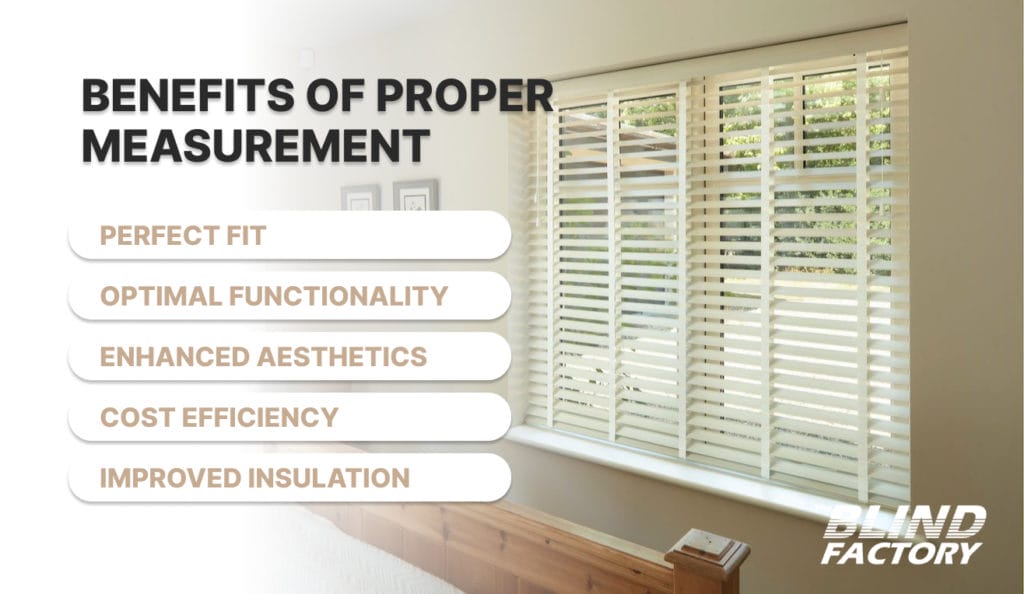
Also called as Venetian blinds, mini blinds are a type of horizontal window covering made up of slats that can be tilted open or closed to control light and privacy.
These slats are typically narrower than those in standard horizontal blinds, giving them the “mini” moniker.
Made from various materials, such as aluminum, vinyl, or wood, mini blinds are versatile, durable, and suitable for various window sizes and styles. Their sleek design and functionality make them a popular choice for homes and offices.
Benefits of Proper Measurement
- Perfect Fit: Accurate measurements ensure that your mini blinds fit snugly within the window frame, eliminating unsightly gaps and overlaps.
- Optimal Functionality: When mini blinds are correctly sized, they operate smoothly, allowing for easy adjustments to light and privacy levels.
- Enhanced Aesthetics: Blinds that fit well look professional and polished, elevating the room’s overall appearance.
- Cost Efficiency: Getting the measurements right first avoids the additional costs of adjustments or replacements.
- Improved Insulation: Properly fitted blinds can act as an insulating barrier, helping to regulate indoor temperatures and potentially reducing energy bills.
Now that we’ve established a foundational understanding of mini blinds and the importance of precise measurements let’s delve into the actual process.
Whether you’re a DIY enthusiast or just looking to refresh your space, accurate measurements are the key to success.
Preparing to Measure for Mini Blinds
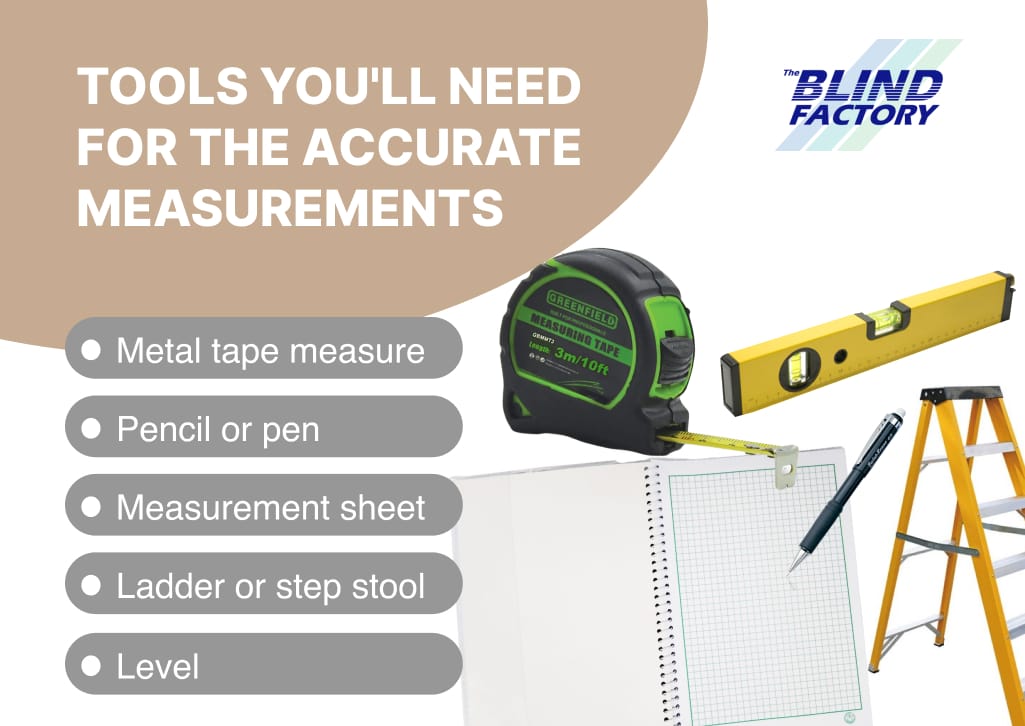
Compared to repairing blinds, measuring for mini blinds doesn’t require an extensive toolkit, but having the right tools on hand is vital for precision. Here’s a quick checklist:
- Metal Measuring Tape: This is more accurate than cloth tape, especially for longer spans.
- Pencil or Pen: For jotting down measurements as you go.
- Notepad or Measurement Sheet: To organize and record each measurement clearly.
- Level: To ensure that your measurements are straight, especially for wider windows.
- Ladder or Step Stool: For reaching the top of taller windows safely.
Deciding Between Inside and Outside Mount for Your Window Frame

One of the first decisions you’ll need to make is whether to mount mini blinds inside or outside the window opening. Both have their advantages, and the choice often depends on your aesthetic preference and window structure.
- Inside Mount: This means the blinds will be mounted inside the window casing. It offers a clean, built-in look, allowing the window trim to be visible. It’s ideal for windows with deep sills or if you prefer a minimalist appearance.
- Outside Mount: Here, the blinds are mounted outside the window casing, covering the entire window frame. This window covering is best with shallow sills or if you want to hide unattractive window frames. Outside mounts can also make a window appear larger than it is.
Consider factors like window depth, obstructions (like handles or cranks), and your desired look when making this decision.
Measuring for Inside Mount Blinds
Opting for inside-mounted mini blinds offers a sleek, integrated look that complements the window’s architecture. However, customized or precise measurements are essential to achieving this seamless appearance. Let’s explore the steps and considerations for inside mounts.
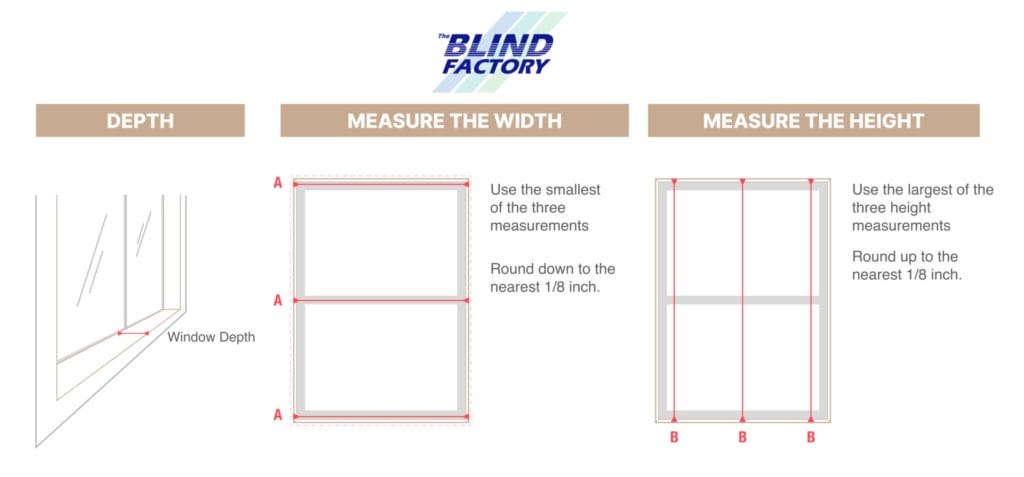
Depth Requirements for Inside or Outside Mount
The depth of your window casing plays a pivotal role in determining the feasibility of an inside mount. Here’s what you need to know:
- Minimum Depth: Ensure your window frame has enough depth to accommodate the mini blinds. This depth varies based on the type of blinds and any additional features like cordless mechanisms.
- Flush Mount: A certain depth is required for the blinds to sit perfectly flush with the window frame. The blinds might protrude slightly if the window casing doesn’t meet this depth.
Measure the Width
Accurate width measurements ensure that the blinds fit snugly within the window frame. Follow these steps:
- Top, Middle, and Bottom: Measure the width of the inside edge of the window frame at three points – the top, middle, and bottom.
- Smallest Measurement: Always use the smallest of the three measurements to ensure the blinds fit without obstruction. Round down to the nearest 1/8 inch.
Measure the Height
The height determines the length of the blinds, ensuring they cover the window adequately:
- Three Points: Measure the height from the top to the bottom of the window frame at three points – left, center, and right.
- Largest Measurement: Unlike width, use the largest of the three height measurements. This ensures the blinds cover the entire window length. Round up to the nearest 1/8 inch.
Important Tips and Common Mistakes
- Avoid Rounding Up Width: Always round down to ensure the blinds fit within the frame.
- Double-Check Measurements: It’s always a good idea to measure twice to avoid errors.
- Avoid Cloth Tapes: Metal measuring tapes provide more accurate results.
- Consider Window Obstructions: Be mindful of obstructions like handles or locks that might interfere with the blinds.
Related Article: How to Measure for Vertical Blinds
Measuring for Outside Mounted Mini Blinds
Outside mounted mini blinds offer a distinct aesthetic appeal, covering not just the window but also a portion of the surrounding wall or frame. This style is particularly beneficial for windows with shallow depths or when you desire increased privacy and light control. Let’s delve into the specifics of measuring for outside mounts.
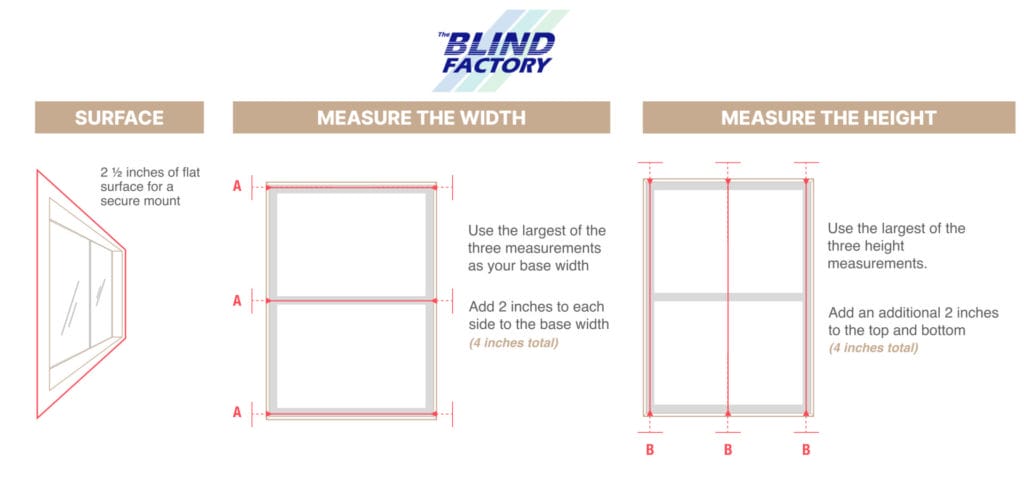
Flat Surface Requirements for Outside Mount
Before you begin measuring, it’s essential to ensure that you have an adequate flat surface for mounting the blinds:
- Mounting Area: Determine where you intend to mount the blinds. This could be on the window trim or above it on the wall. Ensure you have a minimum of 2 ½ inches of flat surface for a secure mount.
- Avoid Obstructions: Ensure that no obstructions like light fixtures, moldings, or other decor elements might interfere with the blind’s operation.
Measuring the Width of the Outside Mount
For outside mount mini blinds, the step to measure the width is crucial for achieving the desired overlap on the window frame:
- Three Points: Measure the window width at the top, middle, and bottom.
- Largest Measurement: Use the largest of the three measurements as your base width.
- Add Overlap: For optimal light control and aesthetics, add 2 inches to each side (4 inches total) to the base width. This ensures the blinds cover the entire window and a portion of the surrounding area.
Measuring the Height for Outside Mount
The step to measure the height determines how much of the wall or frame the outside mounted blinds will cover:
- Three Points: Measure the height from the top left, then the center, and finally the top right down to the window sill or desired length.
- Largest Measurement: Use the largest of the three height measurements.
- Add Overlap: Add an additional 2 inches to the top and bottom (4 inches total) to ensure the blinds cover the entire window length and provide a buffer
Additional Considerations for Outside Mount
- Depth of the Blinds: Depending on the type of mini blinds, consider the protrusion from the wall. Some blinds might have a more substantial profile, especially if they have features like cordless mechanisms.
- Wall Material: Ensure that the wall or frame where you’re mounting the blinds can support the weight. You might need specific anchors or screws for materials like brick or drywall.
- Aesthetic Preferences: While the standard recommendation is to add 2 inches for overlap, you can adjust based on your design preferences. More overlap can give a more dramatic look, while less overlap offers a minimalist appearance.
Understanding Deductions and Adjustments
Before you measure mini blinds, it’s essential to understand the deductions and adjustments that might be made during the manufacturing process. These tweaks ensure the blinds operate smoothly and fit seamlessly within your window or on your wall.
Let’s delve deeper into this aspect.
Factory Deductions Explained
Factory deductions are slight reductions made to the measurements you provide when ordering your mini blinds. These deductions account for various factors:
- Mounting Hardware: The brackets and hardware used to mount the blinds can take up space, necessitating slight reductions in the blind’s size.
- Operational Clearance: A small amount of space is needed on all sides for the blinds to function smoothly without scraping against the window frame or wall.
- Inside vs. Outside Mount: The type of mount you choose can influence the deductions. For instance, inside mounts might have more significant deductions to ensure the blinds fit within the window casing.
It’s crucial to provide the exact measurements without making your deductions, as the manufacturer will adjust for these factors.
Depth and Deductions Chart
While the exact deductions can vary based on the manufacturer and the specific product, here’s a general chart to give you an idea:
Inside Mount Deductions
- Width: Typically reduced by 1/8 to 1/4 inch.
- Height: Generally remains the same unless specified.
Outside Mount Deductions
- Width: Usually remains the same.
- Height: Might be reduced slightly for operational clearance.
- Special Features: Blinds with cordless mechanisms or other unique features might have different deduction standards.
Always refer to the product specifications or consult with the manufacturer to understand the exact deductions for the window treatments you’re ordering.
Final Words
Make sure to measure accurately, especially around the window. Whether you’re measuring the top of the window or the side of the window, every detail counts. Armed with the knowledge from this guide, you’re now ready to ensure that every window in your home or office is adorned perfectly. And if you’re looking for the highest quality blinds to complement your precise measurements, reach out to The Blind Factory today and let us bring your vision to life.

